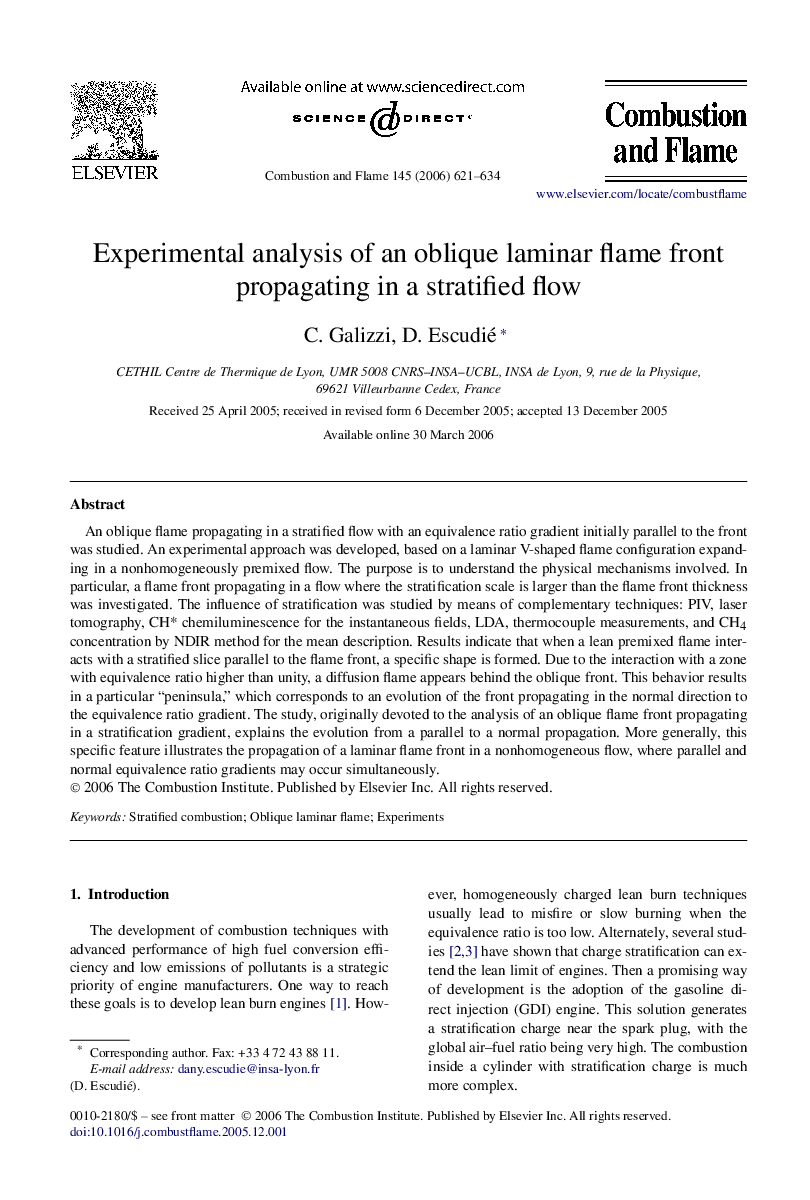| Article ID | Journal | Published Year | Pages | File Type |
|---|---|---|---|---|
| 170163 | Combustion and Flame | 2006 | 14 Pages |
An oblique flame propagating in a stratified flow with an equivalence ratio gradient initially parallel to the front was studied. An experimental approach was developed, based on a laminar V-shaped flame configuration expanding in a nonhomogeneously premixed flow. The purpose is to understand the physical mechanisms involved. In particular, a flame front propagating in a flow where the stratification scale is larger than the flame front thickness was investigated. The influence of stratification was studied by means of complementary techniques: PIV, laser tomography, CH* chemiluminescence for the instantaneous fields, LDA, thermocouple measurements, and CH4 concentration by NDIR method for the mean description. Results indicate that when a lean premixed flame interacts with a stratified slice parallel to the flame front, a specific shape is formed. Due to the interaction with a zone with equivalence ratio higher than unity, a diffusion flame appears behind the oblique front. This behavior results in a particular “peninsula,” which corresponds to an evolution of the front propagating in the normal direction to the equivalence ratio gradient. The study, originally devoted to the analysis of an oblique flame front propagating in a stratification gradient, explains the evolution from a parallel to a normal propagation. More generally, this specific feature illustrates the propagation of a laminar flame front in a nonhomogeneous flow, where parallel and normal equivalence ratio gradients may occur simultaneously.
